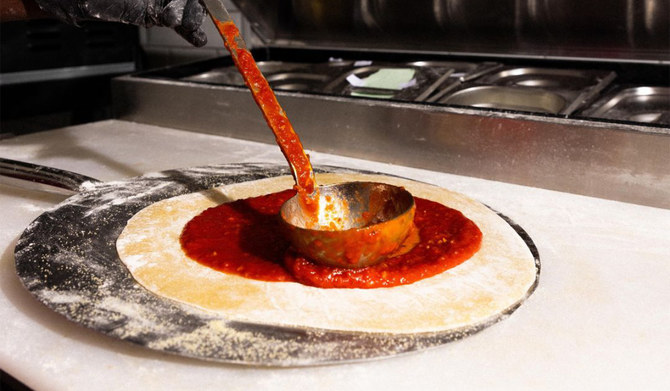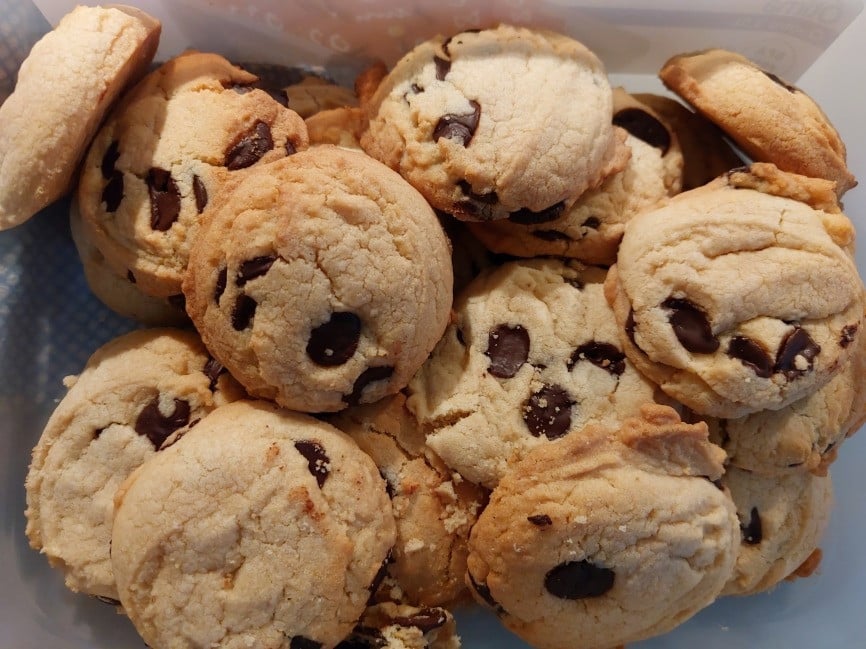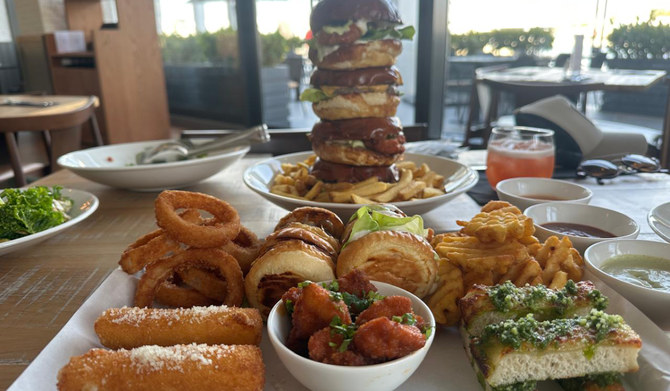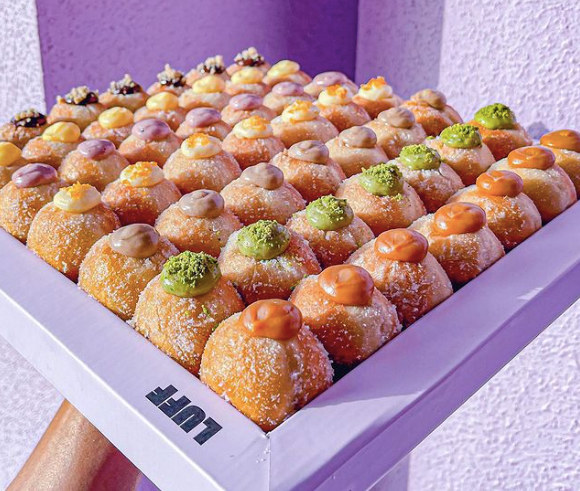Monitoring Desk
Despite Taco Bell’s international fame, Mitla Cafe has a place in the history of Mexican American cuisine as the first eatery to serve hard-shell tacos in the United States.
While there are 7,400 Taco Bell locations, there is only one Mitla Cafe
In the world of food snobbery – in this case, Mexican food snobbery – hard-shell tacos are considered something of a taco crime. Crispy, ground beef-filled tacos topped with cheese, tomatoes and lettuce are seen as so passé that a single mention of eating one could cause a collective eyeroll from the hipster fooderati everywhere from Brooklyn to Portland, Echo Park to Austin. But not in San Bernardino, California.
That’s where, in 1937, Salvador and Lucia Rodriguez, immigrants from Jalisco, Mexico, started making hard-shell tacos and selling them to the local Mexican American community at their newly opened Mitla Cafe, located on the erstwhile Route 66 in San Bernardino, California. Lucia, who was in charge of the kitchen, had decided to make hard-shell tacos as this was something her family in Mexico would eat mostly at Lent, stuffed with mashed potatoes. For this new venture, though, she used whatever ingredients were available: in this case, ground beef, cheddar cheese, tomatoes and iceberg lettuce.

The tacos at Mitla Cafe were a hit. Even civil rights activist Cesar Chavez was a regular when he was in town.
Then in early 1948, an ambitious 25-year-old American man (whose family had moved to the area from Minnesota) opened a hamburger and hotdog stand across the road from Mitla Cafe. The eatery did modest business, but a new restaurant called McDonald’s had opened up two miles away and seemed to be quickly cornering the burger market in the area. The young burger-stand entrepreneur often had nothing to do but stare across the street at Mitla Cafe. Specifically, he’d gawk at the perpetual line of regulars anxiously awaiting to savour the restaurant’s tacos dorados, made-to-order hard-shell tacos.
And that’s when the young man had a lightbulb moment: maybe he could capture the imagination of Americans with tacos the way McDonalds had with burgers. Soon enough he was ingratiating himself with the owners of Mitla Cafe. And not long after, he was in their kitchen learning how the ground beef was stuffed into a corn tortilla, deep fried and then loaded with cheese, tomatoes and lettuce.

He made a fry basket out of chicken wire and started trying to figure out how to mass-produce hard taco shells. And in November 1951, he added tacos to the menu of his hamburger spot. Soon, his (predominantly white) clientele began trying these “take-ohs”, as non-Mexicans apparently first pronounced them, which, at 19 cents each, were a hit. A few years later, he opened a couple of new quick-service restaurants that offered only tacos. The taco stands went through different names – Taco Tia, El Taco – before he settled on an eponymous name for his taco eateries. The man’s name was Glen Bell and Taco Bell had been born.
Today, there are more than 7,400 Taco Bell locations across 30 countries. And there is one Mitla Cafe, still quietly producing delicious hard-shell tacos the way it has for decades. The family of Salvador and Lucia Rodriguez, now in their third generation, are running the place as a community of regular patrons crunch, munch and sip their way through a largely unchanged menu of crispy tacos, gooey cheese enchiladas and potent margaritas.
Mitla Cafe has a place in the history of Mexican American cuisine as the first eatery to serve hard-shell tacos in the United States. And also for being the unlikely inspiration that launched a billion hard-shell tacos into corporate south-of-the-border flavoured fast food hegemony. For more than eight decades, Mitla Cafe has been anchored along Mt Vernon Boulevard, a swath of Route 66, which is like a lifetime for a restaurant. How and why Mitla has managed such longevity is miraculous.

Why it has largely been so unheralded outside of San Bernardino was a mystery to me. I decided to go to the source to find out its secret.
I swung open the door to Mitla Cafe around noon on a Tuesday. What felt like a ghost town outside was an improbable party inside. The high-ceilinged interior was near capacity with lunching locals. The tacos here are fried to order; when mine arrived, they were warm and crispy.
It probably ought to be displayed at the Smithsonian
The oddity at Mitla Cafe are the tacos themselves: hard-shell tacos have been so uncool for so long that most lovers of Mexican food consider them to be “non-authentic”. And that’s mostly because of Taco Bell, which made hard-shell tacos ubiquitous in the (mostly white) American suburbs. Dismiss the hard-shell taco at your own peril, though, as you’ll be erasing an important era of Mexican American history. As the Los Angeles Times said, the taco at Mitla “feels like a tidy, crisp homage to Mid-century America. It probably ought to be displayed at the Smithsonian.”
A few minutes after my tacos arrived, Michael Montaño, grandson of Salvador and Lucia Rodriguez, came to sit at my table. He’s been working here on and off since he was in high school. “If you’re a family member and you come into Mitla to eat, you’re going to end up bussing tables or something,” he said. “So I grew up working here off and on. It’s only been the last few years that I’ve played a more active role in the restaurant.” He also makes his grandmother’s secret salsa. “Only three of us know the recipe,” he said. And, then added with a chuckle, “We don’t travel together.”

But, I wondered to Montaño, what are the secret ingredients to Mitla Cafe’s longevity? “To see how special Mitla Cafe is, you really have to just be here,” he said. “Look around, it feels like you’re in a busy part of your house, the living room or the kitchen. If you come here enough, you’ll start to see the regulars. We have people coming here for decades. These two gentlemen over here are brothers; their mom is one of our cooks. So, they’ve grown up here. We have a connection to the community, where there are two or three generations coming in together.”
Montaño opened a manila folder and pulled out a menu. It was the earliest Mitla Cafe menu they still have – from the late 1940s, he speculated. Aside from the prices and a few nods to gringo eating habits, such as pancakes and burgers, not much has changed.
“It’s important to recognise that Bell was a failed fast food entrepreneur before he had the realisation that the restaurant across the street from his flagging business was booming, the Mitla Cafe”, said Steven Alvarez who teaches a course at St John’s University in New York called Taco Literacy, which looks at Mexican immigration in New York City via Mexican fare. “What happened here is a white guy seeing opportunities to market Mexican food to a ‘mainstream’ audience for the love of profit, and not the love of Mexican people.”

Mitla would have been just fine with or without the Taco Bell connection. It deserves to be lauded despite whatever Glen Bell may have “borrowed” (and then grossly profited) from them. That said, the connection was almost lost to history. At least until about a decade ago when writer Gustavo Arellano was reading a biography of Bell called Taco Titan, in which Bell recalls the story of his hamburger stand across from a popular taco-slinging Mexican restaurant in San Bernardino. Bell gave the intersection but not the name of the restaurant. “So just on a hunch, I drove out to San Bernardino,” said Arellano.
“Once I got there, I saw the old hamburger place, which is now – ironically – a taco place,” he said. “And then I was blown away that there was a Mexican restaurant across the street. I thought: no way is it that same restaurant that Glen Bell mentioned in his book. It can’t still be here. Restaurants don’t last that long.”
Arellano approached an older woman who worked there, Irene Montaño, a daughter-in-law of Salvador and Lucia Rodriguez, the original family of owners, and asked: is this the restaurant where Glen Bell got his original idea for Taco Bell? “Oh yeah,” she told Arellano. “I remember him, this white guy used to come in late at night, ask lots of questions about how we made tacos, and then leave.”

A couple of years later, the tale ended up in Arellano’s fascinating book Taco USA: How Mexican Food Conquered America. As Micheal Montaño told me, “Before Gustavo came in, we hadn’t really made the connection. We hadn’t equated Taco Bell with Glen Bell. What makes it feel a lot better is that my grandmother is finally getting some credit for her place in the history of Mexican American cuisine. She came here with small children and made a small business out of almost nothing.”
“Mitla Cafe has survived for so long simply because it’s really good,” Arellano told me. “It’s a time capsule of Mexican food from the first half of the 20th Century. Things are changing. Right across the street from Mitla is a place that’s selling birria tacos.” These slow-stewed goat or beef tacos are currently all rage in the foodie world. “Mitla attracts multi-generational families. You have to take a culinary pilgrimage there,” he continued. “You wouldn’t have the Mexican food that you love if you didn’t have Mitla.”
He’s right. Looking back, Bell’s appropriation of Mexican food, in general, and of Mitla Cafe’s hard-shell tacos, in particular, seems questionable, if not egregious. But the Mexican dining landscape in the United States has blossomed thanks to old-school Mexican restaurants like Mitla Cafe and hard-working Mexican immigrants who brought their recipes and kitchen know-how with them to the US.

Also, we’re now looking beyond fast food, with Americans yearning for regional Mexican food along with creative, elevated takes on the cuisine that are prepared by Mexican and Mexican American chefs — restaurants such as Taco Maria in Southern California and two-Michelin-starred Californios in San Francisco, as well as the lauded and super inventive Cosme in New York City and Cala in San Francisco. And of course, there would be none of the above without places like Mitla.
“There are so many Mitla Cafes around – old-school Mexican restaurants sprinkled around the country – and they each have their own history,” said Arellano. “We can’t dismiss these places. They are a part of our history.”
He summed everything up succinctly: “People might dismiss the menu at Mitla but it’s ludicrous and presumptuous to do that because this is the Mexican food of a whole generation of people.” And then he added, “Taco Bell needs Mitla Cafe more than Mitla Cafe needs Taco Bell. Mitla is the heritage which Taco Bell is standing on.”
Courtesy: BBC








